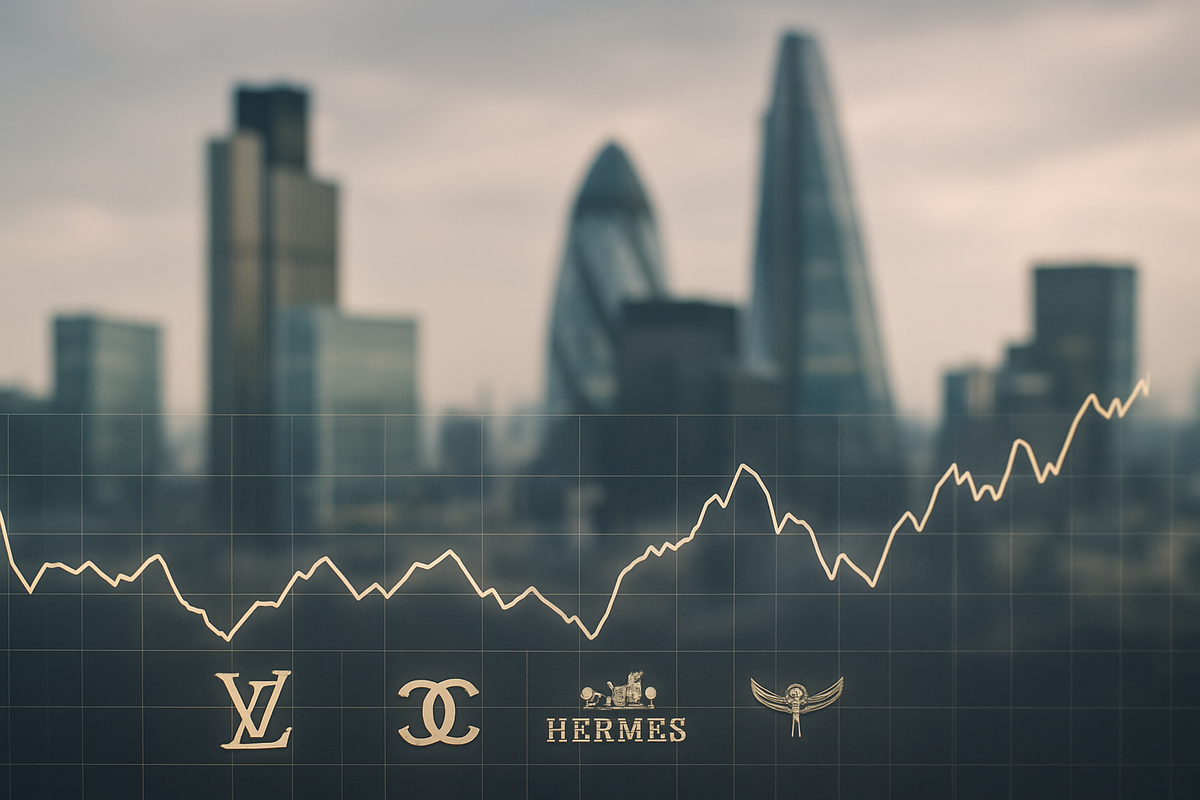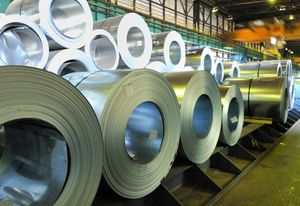
As the Q3 2025 reporting season for European luxury stocks rapidly approaches, investors are meticulously scrutinizing the landscape, guided by a nuanced outlook from Jefferies. The prominent investment bank has presented a picture of cautious optimism, noting a discernible shift in investor sentiment towards certain segments of the luxury market, yet tempering enthusiasm with underlying concerns about broader economic headwinds and valuation levels. This intricate forecast suggests that while opportunities may emerge, particularly among "turnaround" brands, the market will demand robust performance and clear strategic pathways to justify current valuations and future growth.
The immediate implications for the market are a blend of selective investment and heightened scrutiny. Non-ultra luxury stocks have recently experienced a significant rally, narrowing their valuation discount to ultra-luxury peers, indicating a market appetite for recovery stories. However, Jefferies advises caution, suggesting this sentiment shift might be premature without solid Q3 results. Key drivers such as strengthening U.S. demand and modest improvements in mainland China are under the microscope, with investors keenly awaiting concrete evidence of sustained growth in these critical markets. Conversely, concerns persist regarding current valuations of ultra-luxury leaders like LVMH (EPA: LVMH), which may not offer sufficient protection against potential U.S. market weakness, signaling a discerning approach from investors as earnings unfold.
Jefferies' Scrutiny Reveals Sector Polarization Ahead of Critical Q3 Disclosures
Jefferies' recent deep dive into the European luxury sector reveals a landscape marked by strategic adjustments and selective recommendations, setting the stage for a critical Q3 2025 reporting season. The investment bank's analysis, published around early September 2025, underscores a prevailing sentiment of "polarization" within the industry, where individual brand performance and market positioning will be paramount. This outlook arrived as the Q3 reporting season typically kicks off in October, with key players like LVMH (EPA: LVMH) and L'Oréal (EPA: OR) slated to release their results. L'Oréal, for instance, has its Q3 2025 results scheduled for October 21, 2025.
Jefferies maintained a "Hold" rating on LVMH, a luxury behemoth, while raising its price target to EUR470.00 from EUR450.00. This adjustment, a 4.4% increase, came with a caveat: Jefferies expressed caution about the sector's near-term prospects, suggesting any Q3 improvements might offer only temporary relief following challenging comparisons from 2024. The firm also trimmed its revenue and operating profit estimates for LVMH, citing potential U.S. market weakness and concerns that the current valuation, at 23 times 2026 projected earnings, might not provide sufficient protection. This contrasts with HSBC's (LSE: HSBC) "Buy" upgrade for LVMH, driven by optimism for Dior's creative potential, highlighting a divergence in analyst opinions regarding the luxury giant's immediate future.
Kering (EPA: KER), another major player, was positioned at the top of Jefferies' European luxury rankings despite facing ongoing challenges. The brand has seen renewed investor optimism, though Jefferies advises tempering this enthusiasm due to its reliance on American spending patterns, persistent Chinese consumer reluctance, and foreign exchange pressures anticipated to extend into 2026. The positive reception of Gucci's recent debut under creative director Demna could, however, provide some much-needed momentum. Meanwhile, Burberry Group (LSE: BRBY), identified as a market laggard, has garnered increased investor interest as a potential recovery play, with expectations that its Winter ranges could accelerate recovery efforts.
In the luxury-adjacent beauty sector, Jefferies maintained an "Underperform" rating on L'Oréal (EPA: OR) with an unchanged price target of €340 ahead of its Q3 2025 results. The firm estimated L'Oréal's like-for-like growth at 4.7% in Q3, broadly in line with an estimated market growth of 5%. The initial market reaction to Jefferies' comprehensive outlook, while not immediately quantifiable as a distinct event, contributed to the prevailing cautious sentiment. This aligns with broader industry views from other analysts, including HSBC and Morgan Stanley (NYSE: MS), who have highlighted a general slowdown in luxury growth, increased performance polarization, and the critical importance of geographical market dynamics—particularly in China and the U.S.—in shaping the sector's trajectory through 2024 and into 2025.
Strategic Positioning and Macroeconomic Headwinds Shape Company Fortunes
Jefferies' analysis meticulously identifies specific European luxury players poised for potential gains or facing significant headwinds as the Q3 reporting season unfolds. The rationale behind these predictions is deeply rooted in individual brand strategies, market exposure, and the prevailing macroeconomic environment.
At the forefront of Jefferies' European luxury rankings is Kering (EPA: KER). Despite persistent challenges, the investment bank observes renewed investor optimism, partly fueled by the positive reception of Gucci's recent collection under creative director Demna. This momentum could provide a much-needed boost, positioning Kering as a potential winner. However, Jefferies tempers this outlook by highlighting Kering's continued reliance on American consumer spending—currently bolstered by high market and cryptocurrency values—and ongoing struggles with Chinese consumer reluctance. Furthermore, foreign exchange pressures are expected to impact the company's cost of goods sold well into 2026. While S&P Global Ratings recently revised Kering's outlook to negative, citing weaker credit metrics, HSBC (LSE: HSBC) has counter-intuitively upgraded the stock to a "Buy" rating, raising price targets based on anticipated sales improvements and strategic shifts, showcasing a divided expert view.
Another company drawing significant attention from Jefferies is Burberry Group (LSE: BRBY). Identified as a "market laggard," Burberry is attracting increased investor interest, particularly from those seeking liquid underperformers with significant recovery potential. Jefferies notes that discussions around Burberry echo those from late 2024 to early 2025, suggesting a cyclical interest in the brand's turnaround story. The upcoming Winter ranges are anticipated to accelerate its recovery efforts, positioning it as a potential beneficiary if these initiatives gain traction.
While not explicitly labeled as "losers," Jefferies' broader sector analysis implicitly points to companies vulnerable to certain overarching challenges. Firms with substantial exposure to the Chinese market are likely to face continued pressure due to persistent consumer reluctance. Similarly, companies with extensive international operations and supply chains could be negatively impacted by foreign exchange fluctuations. The implementation of 15% U.S. customs duties on European products, and a significant 39% on Swiss goods, is a critical concern. This tariff regime is projected to contract the luxury market by at least 2% by the end of 2025, with Swiss watchmaking bearing a considerable brunt. This development poses a substantial threat to European luxury companies heavily reliant on the American market. Furthermore, the specter of weak sales, low margins, and subdued demand, which characterized 2024, is expected to persist through 2025, disproportionately affecting companies with inefficient inventory management strategies and those less agile in adapting to changing consumer preferences.
Broader Trends and Geopolitical Shadows: A Reshaping of the Luxury Landscape
Jefferies' nuanced outlook on European luxury stocks, particularly the observed rally in "non-ultra luxury names," signals a pivotal moment within an industry grappling with profound global shifts. This trend indicates a potential rebalancing where undervalued brands may gain traction, even as the sector confronts significant macroeconomic and geopolitical headwinds. The Q3 reporting season is not merely about quarterly numbers; it's a barometer for how well luxury houses are adapting to a new, more challenging environment.
The current landscape is defined by several overarching industry trends. Firstly, the post-pandemic boom in luxury spending has given way to a notable slowdown, with projections for lower single-digit growth through 2025. A critical factor is the weakening demand from China, historically a dominant force in luxury consumption. Rising debt, high youth unemployment, and a real estate downturn are eroding middle-class confidence, a stark contrast to China's role in previous luxury market rebounds. Secondly, aspirational shoppers, particularly in the United States—which accounts for 26% of the global luxury market—are showing signs of fatigue due to inflation, rising interest rates, and recession concerns. While ultra-high-net-worth individuals (UHNWIs) remain relatively insulated, the broader base of consumers is more susceptible to economic pressures, impacting the volume of luxury sales.
These trends have significant ripple effects across competitors and partners. While some ultra-luxury players like Hermès International (EPA: RMS) and Brunello Cucinelli (BIT: BC) appear more resilient due to their focus on the ultra-wealthy, underperformers such as Kering (EPA: KER) and Burberry Group (LSE: BRBY) have seen substantial market value declines. However, Jefferies' positioning of Kering at the top of its rankings, driven by strategic repositioning and positive reception for Gucci's new creative director, demonstrates that proactive measures can still attract favorable analyst views. For suppliers and retailers, the threat of tariffs could lead to increased production costs, prompting luxury houses like LVMH (EPA: LVMH) and Chanel (privately held) to explore or expand local production facilities in key markets like the U.S. This strategic pivot could reshape global supply chains and reduce reliance on European manufacturing for certain markets, impacting a wide network of smaller, specialized partners.
Regulatory and policy implications, particularly the specter of tariffs, cast a long shadow over the European luxury market. The potential imposition of substantial tariffs by the U.S., including a possible 50% on EU imports and 31% on Swiss goods, directly threatens the competitiveness of European luxury brands in a crucial market. In response, brands are considering price increases—a strategy that risks alienating price-sensitive consumers—and accelerating efforts in local production. LVMH and Kering, for example, have already increased production in Italy and France and are looking to expand U.S. manufacturing. Historically, the luxury market has demonstrated remarkable resilience, rebounding from significant declines during the 2008-2009 financial crisis and the 2020 COVID-19 pandemic, often with Chinese consumption playing a pivotal role. The current slowdown, following an "excessive growth" period post-pandemic, could be viewed as a natural market correction. While the "September Effect" and rising recession fears add to market volatility, the long-term trend suggests eventual recovery, albeit potentially with different leaders and strategies defining the path forward.
The Road Ahead: Navigating a Complex and Evolving Luxury Landscape
The upcoming Q3 reporting season and Jefferies' outlook signal a period of both significant challenges and strategic opportunities for European luxury stocks, shaping their trajectory in the short and long term. Companies are poised for critical strategic pivots to adapt to evolving consumer behaviors and a volatile global economic environment.
In the short term (Q4 2025 - H1 2026), the sector faces persistent headwinds from global macroeconomic uncertainty, inflation, and geopolitical instability, which collectively foster cautious consumer spending. The ability to raise prices, a previous growth engine, is reaching its limit, particularly impacting aspirational luxury buyers. Chinese consumer reluctance and real estate market woes continue to delay a full recovery in this vital market, and a strengthening Euro could further pressure export-oriented European brands. However, pockets of opportunity exist: Jefferies notes strengthening U.S. demand, and Goldman Sachs (NYSE: GS) projects a positive recovery in Chinese luxury demand starting in Q3 2025. European markets may benefit from falling inflation and increased tourism. The resilience of high-net-worth individuals provides a stable demand base, and current valuations for some luxury stocks, trading below their ten-year averages, present selective buying opportunities. The latter half of 2025 could also see a resurgence of "loud luxury" and exciting fashion, driven by new designers, potentially re-energizing consumer interest.
Looking further ahead (2026-2030), the overall luxury spending is projected for sound growth of 4% to 8% annually, potentially reaching €2.5 trillion by 2030, according to Bain & Company. However, McKinsey offers a more conservative estimate of 1-3% global annual growth through 2027, with a broader sector rebound not expected until late 2026. Long-term opportunities are concentrated in dynamic emerging markets such as the Middle East, India, and other Asia-Pacific regions, with South Korea emerging as a strategic pivot for conglomerates like LVMH (EPA: LVMH) to hedge against U.S.-China market volatility. There's a growing demand for experiential luxury and personalized services, and categories like watches and jewelry are expected to outpace fashion and leather goods. Persistent geopolitical tensions, trade disputes, the proliferation of gray markets, and increased antitrust scrutiny remain significant long-term challenges.
To navigate this complex environment, European luxury brands are undertaking several strategic pivots. Diversification, both within and beyond traditional luxury goods, is key; Burberry (LSE: BRBY), for instance, is exploring alignments in energy and metals to hedge against fashion sector volatility. Digital transformation and AI integration are paramount for enhancing customer engagement, personalizing recommendations, and optimizing sales. A significant shift towards sustainability and circularity, including engaging with the rapidly expanding pre-owned luxury market, is also underway. Brands are rethinking client engagement, focusing on unique, "money-can't-buy" experiences and personalized services for their most loyal customers. Restoring product excellence, investing in iconic pieces, and strengthening supply chain resilience are critical to upholding value propositions. Geographically, there's a rebalancing of focus towards growing Asian markets like Japan, South Korea, and India, and an expansion into lifestyle offerings beyond traditional products.
Potential scenarios for the sector range from moderate growth, driven by successful digital and sustainability pivots and a gradual recovery in key markets, to a more challenging scenario if macroeconomic headwinds intensify. An optimistic scenario could see an accelerated recovery fueled by robust U.S. demand, a swift Chinese turnaround, and effective AI-driven innovations. Regardless of the specific outcome, the market will likely become increasingly polarized, with strong performance from ultra-luxury brands catering to resilient high-net-worth individuals and "turnaround" non-ultra luxury brands offering value and excitement.
Navigating the Nuances: Key Takeaways for Investors
Jefferies' Q3 outlook on European luxury stocks, while offering targeted optimism for specific brands, paints a picture of a market in transition, demanding strategic agility and a discerning eye from investors. The core takeaway is a cautious near-term perspective, where any Q3 improvements are likely to be temporary relief rather than a definitive reversal of challenging trends.
Moving forward, the market will continue to exhibit polarization. While "non-ultra luxury" brands have seen recent rallies, Jefferies cautions against premature exuberance, emphasizing that a sustained recovery hinges on robust Q3 performance. The persistent "luxury fatigue," where consumers are increasingly questioning value propositions, underscores a lasting impact that will compel brands to innovate beyond mere aspirational appeal. The critical dependencies on American consumer spending patterns and the slow, uneven recovery of the Chinese market highlight the enduring geographical influences on the sector's trajectory.
For investors, the coming months will require close monitoring of several key indicators:
- Chinese Demand Recovery: The pace and extent of a definitive rebound in Chinese aspirational spending will be a pivotal determinant of overall sector health.
- U.S. Consumer Confidence: Shifts in American consumer sentiment, particularly as they relate to broader market and cryptocurrency valuations, will directly impact the performance of luxury players with significant U.S. exposure.
- Brand-Specific Innovations: The success of new creative directions, strategic leadership changes, and product launches, such as Gucci under its new director, will be crucial.
- Operational Efficiency: Watch for evidence of cost optimization and margin protection strategies, which are vital for sustained profitability in a challenging environment.
- Valuation vs. Growth: Critically assess stock valuations against realistic growth projections, especially for highly valued ultra-luxury names.
- Segment Performance: Observers suggest that "hard luxury" categories like jewelry may experience faster growth than "soft luxury" such as fashion and leather goods in the longer term.
- Macroeconomic Environment: Broader economic developments, including monetary and fiscal policy decisions in major global economies, and interest rate dynamics, will continue to influence the luxury sector.
Ultimately, the European luxury market is adapting to a new paradigm. Success will belong to brands that can skillfully navigate geopolitical complexities, embrace digital transformation, prioritize sustainability, and redefine their value propositions to meet evolving consumer expectations.
This content is intended for informational purposes only and is not financial advice





